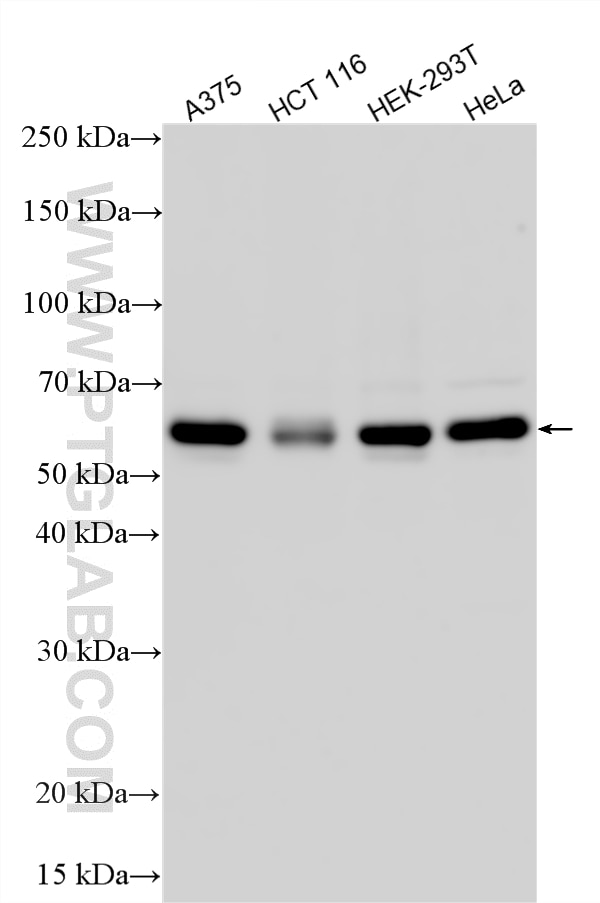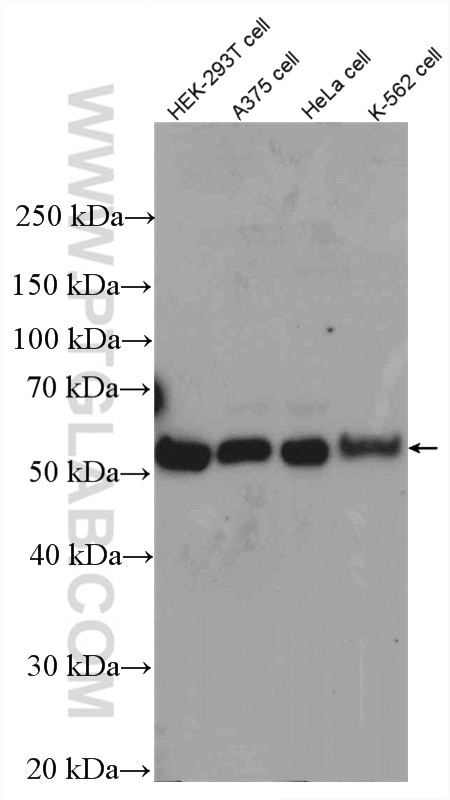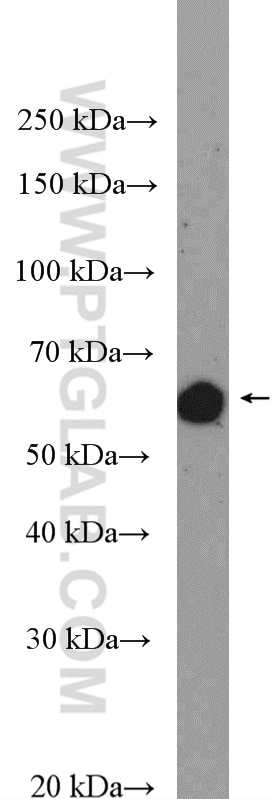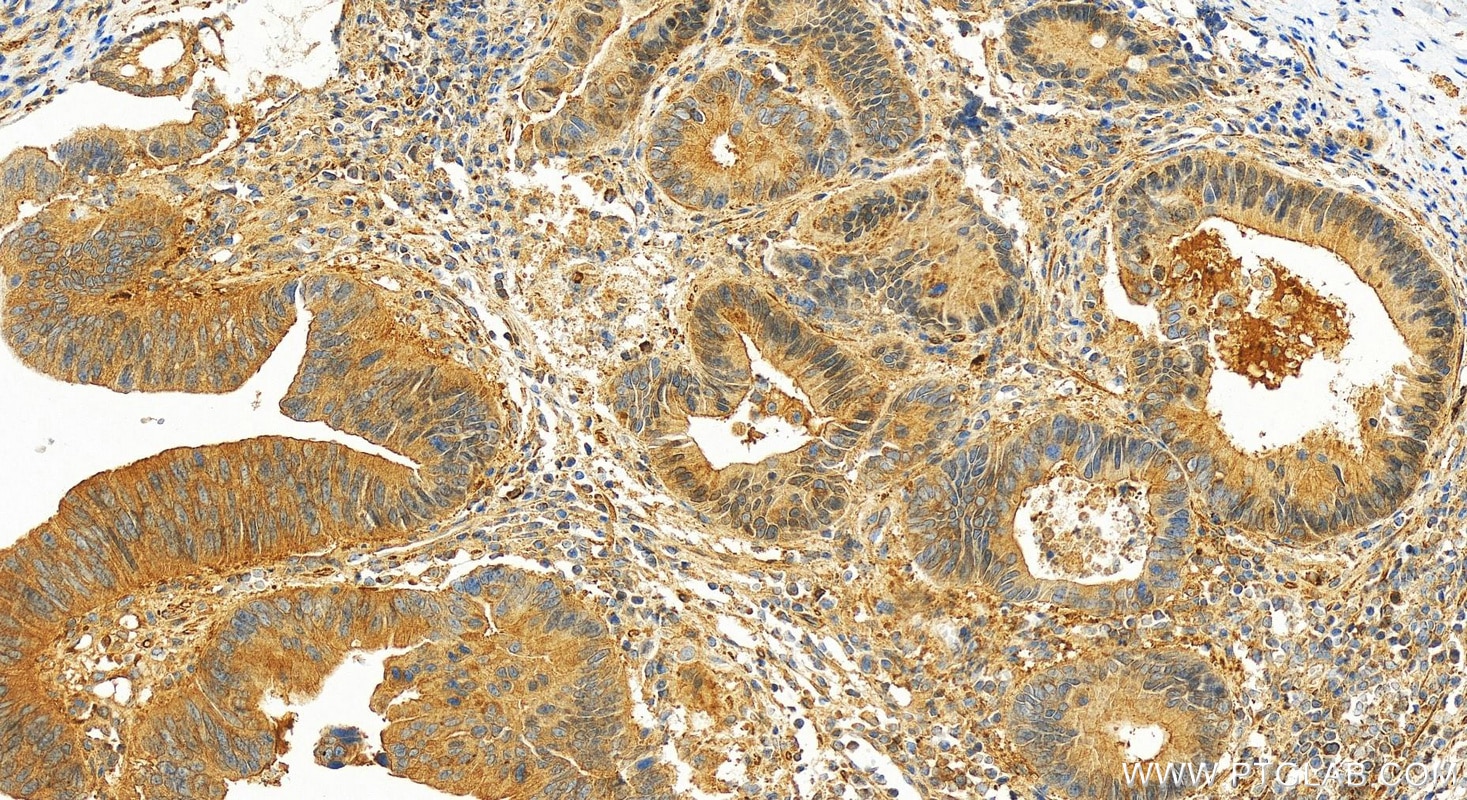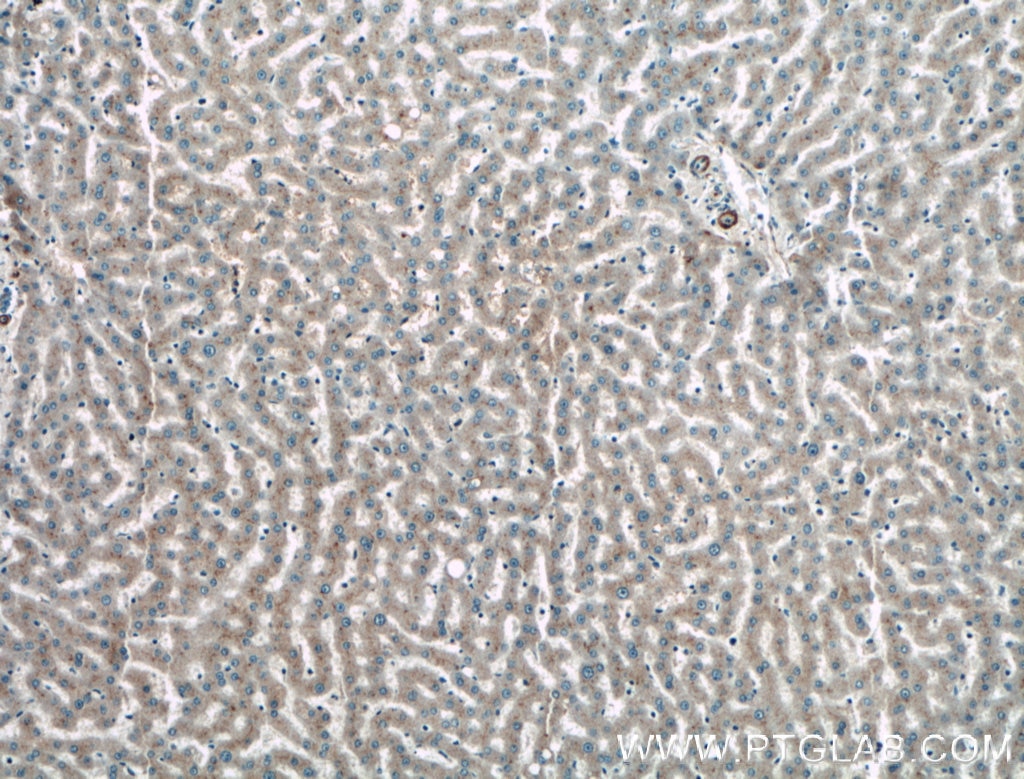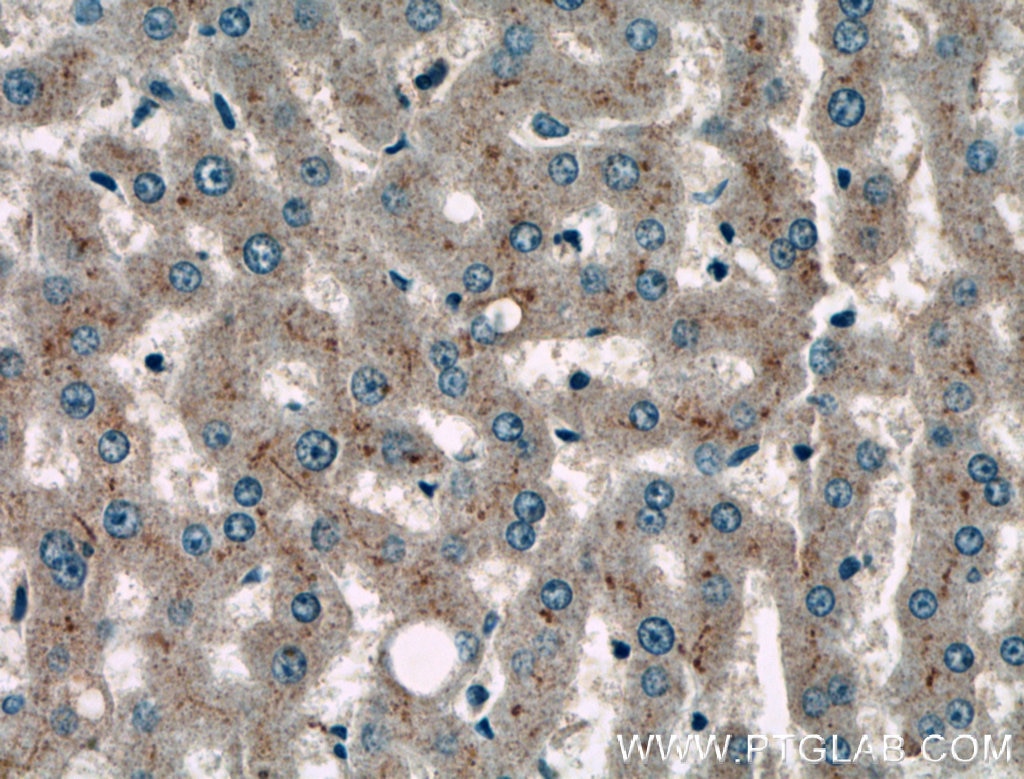Tested Applications
| Positive WB detected in | A375 cells, HEK-293T cells, NIH/3T3 cells, HCT 116 cells, HeLa cells, K-562 cells |
| Positive IHC detected in | human colon cancer tissue, human liver tissue Note: suggested antigen retrieval with TE buffer pH 9.0; (*) Alternatively, antigen retrieval may be performed with citrate buffer pH 6.0 |
Recommended dilution
| Application | Dilution |
|---|---|
| Western Blot (WB) | WB : 1:500-1:2000 |
| Immunohistochemistry (IHC) | IHC : 1:50-1:500 |
| It is recommended that this reagent should be titrated in each testing system to obtain optimal results. | |
| Sample-dependent, Check data in validation data gallery. | |
Published Applications
| KD/KO | See 2 publications below |
| WB | See 3 publications below |
| IF | See 1 publications below |
| IP | See 1 publications below |
Product Information
27566-1-AP targets TAB1 in WB, IHC, IF, IP, ELISA applications and shows reactivity with human, mouse samples.
| Tested Reactivity | human, mouse |
| Cited Reactivity | human, mouse |
| Host / Isotype | Rabbit / IgG |
| Class | Polyclonal |
| Type | Antibody |
| Immunogen |
CatNo: Ag25576 Product name: Recombinant human MAP3K7IP1 protein Source: e coli.-derived, PGEX-4T Tag: GST Domain: 400-504 aa of BC050554 Sequence: TSKTSVTLSLVMPSQGQMVNGAHSASTLDEATPTLTNQSPTLTLQSTNTHTQSSSSSSDGGLFRSRPAHSLPPGEDGRVEPYVDFAEFYRLWSVDHGEQSVVTAP Predict reactive species |
| Full Name | mitogen-activated protein kinase kinase kinase 7 interacting protein 1 |
| Calculated Molecular Weight | 55 kDa |
| Observed Molecular Weight | 55 kDa |
| GenBank Accession Number | BC050554 |
| Gene Symbol | TAB1 |
| Gene ID (NCBI) | 10454 |
| RRID | AB_2880910 |
| Conjugate | Unconjugated |
| Form | Liquid |
| Purification Method | Antigen affinity purification |
| UNIPROT ID | Q15750 |
| Storage Buffer | PBS with 0.02% sodium azide and 50% glycerol, pH 7.3. |
| Storage Conditions | Store at -20°C. Stable for one year after shipment. Aliquoting is unnecessary for -20oC storage. 20ul sizes contain 0.1% BSA. |
Background Information
TGF-beta-activated kinase 1 and MAP3K7-binding protein 1 (TAB1) is also named TAK1-binding protein 1 and MAP3K7IP1. TAB1 is constitutively associated with the composition N-terminal kinase domain of TAK1 and can be activated by pro-inflammatory cytokines (TNFα and IL-1β) and toll-like receptor ligands (PMID: 38072991). TAB1 is a scaffolding protein required for TGF-β activated kinase-1 (TAK1) mediated signalling. TAB1 is a specific protein that interacts with transforming growth factor β-activated kinase 1 (TAK1) (PMID: 32676538). TAB1/TAK1 can activate nuclear factor κB (NF-κB) in high glucose (HG)-induced BMMs, regulating macrophage activation (PMID: 32296020, PMID: 23851980).
Protocols
| Product Specific Protocols | |
|---|---|
| IHC protocol for TAB1 antibody 27566-1-AP | Download protocol |
| WB protocol for TAB1 antibody 27566-1-AP | Download protocol |
| Standard Protocols | |
|---|---|
| Click here to view our Standard Protocols |
Publications
| Species | Application | Title |
|---|---|---|
Int J Mol Sci MicroRNA-27a-5p Downregulates Expression of Proinflammatory Cytokines in Lipopolysaccharide-Stimulated Human Dental Pulp Cells via the NF-κB Signaling Pathway
|
Reviews
The reviews below have been submitted by verified Proteintech customers who received an incentive for providing their feedback.
FH MALLIKARJUNA (Verified Customer) (11-26-2025) | works well for wb and IHC
|

